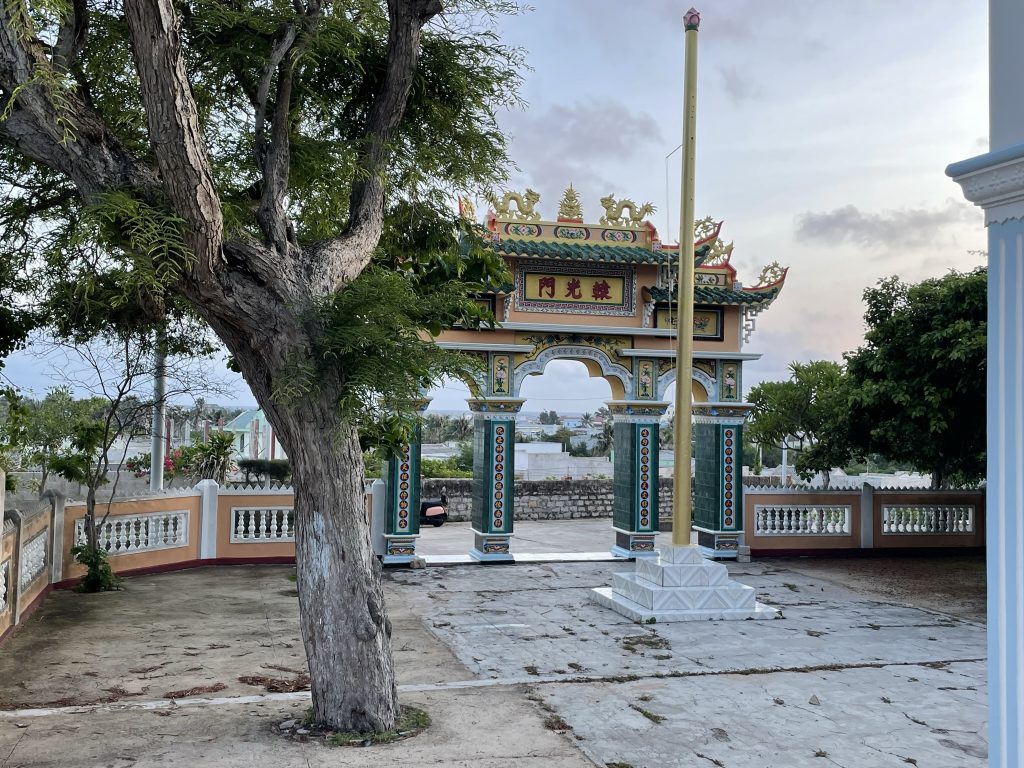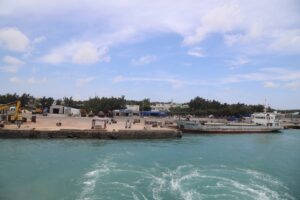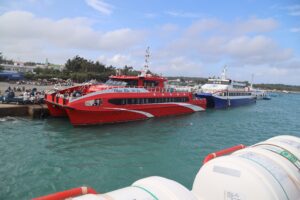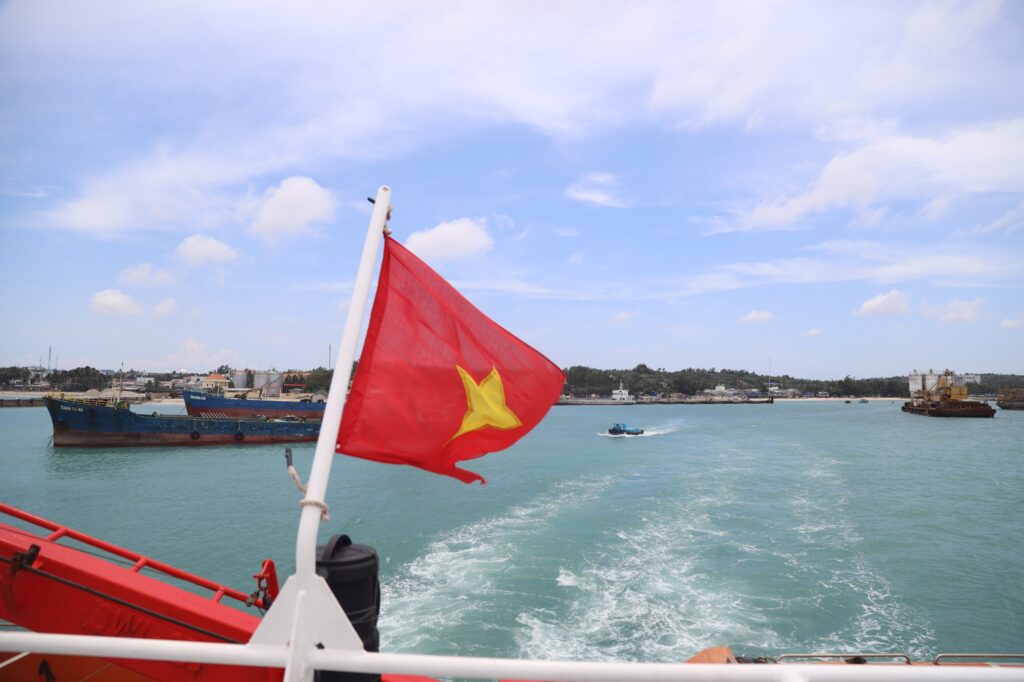Among the long-standing folk belief structures on Phú Quý Island, the temple, tomb, and legends associated with Master Sài Nại hold a revered and sacred place in the spiritual life of the island’s residents.
The Temple and Tomb of Master Sài Nại carry significant historical and cultural value. The legends related to him are still passed down today, closely tied to the early settlement and origin of the island’s inhabitants as they came to establish life on Phú Quý.
The Legend of Master Sài Nại
There are two versions of the legend of Master Sài Nại passed down among the people of Phú Quý:
The first legend says that Master Sài Nại was a Northern astronomer and geomancer who traveled with merchant ships across the ocean to various countries to practice his craft. During one voyage, he and his crew stopped at Phú Quý Island to rest and discovered that this island possessed a sacred energy unlike any other he had encountered. Before leaving, he expressed his wish to his family and crew that his ashes be brought back to Phú Quý Island after his death for burial.
On the 4th day of the 4th lunar month in the Year of the Dragon (Nhâm Thìn), Master Sài Nại passed away. Fulfilling his wishes, a fleet of ships departed from the North Sea, carried his ashes southward, and secretly buried them on Phú Quý Island at night. The next morning, locals were surprised to find offerings of incense, fruit, tea, wine, and animals such as pigs and chickens placed at the rocky coastal area (where his tomb now stands). The story spread quickly, and a crowd gathered to find an earthen jar containing ashes had been buried there.
The second legend describes Master Sài Nại as a merchant from the North in the 16th century. He frequently sailed to different countries for trade and was also a skilled physician. During one voyage, his ship was caught in a storm and washed ashore on Phú Quý Island. While sheltering there, he met Princess Bàn Tranh, and the two became sworn siblings. He decided to settle on the island, practicing medicine and helping the poor. After his death, the islanders buried him in the rocky area now known as Doi Thầy.
The people of Phú Quý have long believed that after his death, Master Sài Nại manifested as a divine spirit. Three loud thunderclaps followed by a bright, radiant light are said to have marked his transformation. Since then, the islanders have placed their trust in his spiritual power. Many have credited him with protection during storms or wartime hardships.
The Tomb of Master Sài Nại
The Tomb of Master Sài Nại sits on a rocky promontory called Doi Thầy in the northeast of Phú Quý Island, in Long Hải Commune. The site was most recently restored in 2002. The architectural complex includes the tomb, a shrine facing west, a guest house, and an incense house.
The tomb structure, located to the left upon entry, is made of stacked coral stones forming a cylindrical shape measuring 2.2 meters in diameter and 90 centimeters in height, with walls 55 centimeters thick.
Behind the tomb is the shrine (Am thờ) featuring dual roofs (front and back). The roof is adorned with relief sculptures of dragons, carp transforming into dragons, turtles, and sea serpents. Built in the tứ trụ style (four pillars), the shrine houses three altars: the central one for Master Sài Nại, featuring a canopy decorated with motifs such as dragons, qilin, and floral patterns. The side altars are adorned with carvings of apricot, orchid, chrysanthemum, bamboo, vines, and flowers. In front of the altars are three intricately carved wooden screens with motifs of bats, birds, animals, and floral vines. Three incense tables are placed in front, with carvings of tiger masks, phoenixes, and flowers.
Two main ceremonial events are held at the tomb annually in the first and seventh lunar months. The rituals and offerings follow the customs of other temples and shrines on the island. In the twelfth lunar month, islanders bring offerings to the tomb to give thanks at year’s end. Due to the large number of worshippers, especially fishermen, visits must be scheduled with the quả keeper (guardian of the tomb). Those preparing for overseas interviews often come to the tomb to pray for success—and many reportedly succeed, returning afterward with offerings in gratitude.
The Temple of Master Sài Nại
To facilitate worship without traveling far, the Vietnamese settlers built the Temple of Master Sài Nại in the 16th century at Ngũ Phụng Commune, on a high hill northeast of An Hòa village. Constructed in the late 17th century, the temple honors Master Sài Nại as a divine figure who aided the people of the island. The nine villages of the island’s three communes take turns annually keeping his imperial decree and holding worship ceremonies—a unique tradition of Phú Quý.
The temple complex includes a main gate, flagpole, screen wall, ceremonial hall (Võ ca), and main sanctuary (Chính điện), facing southwest. The gate, hall, and sanctuary follow traditional architecture with a tam quan gate (three entrances) and a four-roofed square structure topped with decorative reliefs of dragons, phoenixes, and floral patterns.
Inside the main sanctuary are three altars. The central altar, dedicated to Master Sài Nại, is elaborately assembled and lacquered, with the word “Thần” (Deity) embossed in the middle. The left and right altars, for Tiền hiền and Hậu hiền (early and later island founders), are identical in structure. The canopies are adorned with carvings of dragons, animals, flowers, and vines, along with parallel verse couplets in Hán-Nôm script.
The Nguyễn dynasty conferred eight imperial decrees (sắc phong) upon Master Sài Nại, which are kept in rotation by the nine villages of the three communes. Every year, on his death anniversary—the 4th day of the 4th lunar month—villagers organize a procession to bring his decree from the village shrine to the main temple for solemn offerings. The festival follows long-standing customs passed down through generations.
At the end of the Kỵ Thầy (commemoration of the Master) ceremony, the outgoing village transfers the responsibility for the decree and worship of both Princess Bàn Tranh and Master Sài Nại to the next village in line, under the witness of elders, ritual officials, and village representatives. This ritual involves bringing the divine decrees of Princess Bàn Tranh and Master Sài Nại from the village shrine to the temple for offerings.
Offerings to Master Sài Nại at the temple include: beef, pork, chicken, incense, candles, tea, wine, and fruit. The ceremonies are conducted in a solemn and traditional manner. After the festival, the village assuming responsibility for worshipping Princess Bàn Tranh and Master Sài Nại will ceremoniously escort the imperial decree back to their village to begin their year of stewardship—an honor marked by joy and pride among the villagers.










